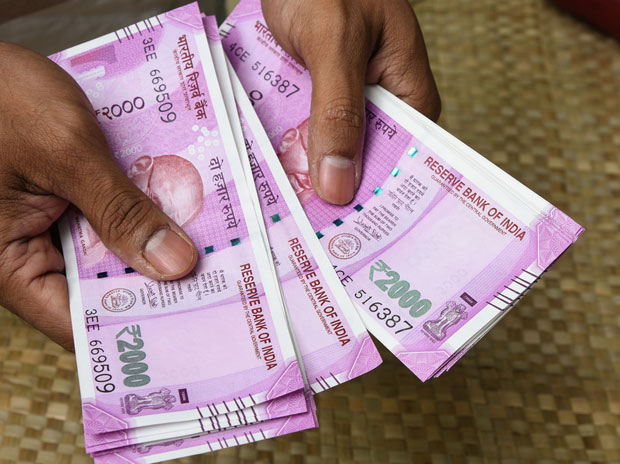[ad_1]
A non-bank customer wanting to exchange Rs 2,000 notes is required to provide their name, mobile number, and any of ID proof which can include Aadhaar, PAN, driving licence, Voter ID, NREGA card, passport, or a letter issued by the National Population Register containing details of name and address by several leading private banks like HDFC Bank, ICICI Bank and Kotak Mahindra Bank.
You must note that the exchange is free of cost. One can exchange Rs 2,000 banknotes up to a limit of Rs 20,000/- at a time. Suppose you have Rs 60,000, you can exchange only Rs 20,000 in a single day from one particular bank.
“As per the RBI’s recent circular regarding Rs.2000 note, a limit of Rs 20,000 has been imposed only as a matter of convenience. Other than for convenience, as per the Income Tax Rules, a person can deposit up to Rs 50,000 without showing PAN card to the bank. Even in such case, the depositor is not under obligation to notify the Income Tax Department. However, the duty to report to IT Department has been cast on the banks if the total deposit in a savings account exceed Rs 10 lakh in a year or total deposits in a current account exceed Rs 50 lakh in a year,” said Shashank Agarwal, an advocate at the Delhi High Court.
What this means is that if you have cash deposits that aggregate to Rs 10 lakh, or more, in your savings account a financial year, then banks have to report it under SFT reporting.
For deposits of Rs 50,000 or more in Rs 2000 notes, you will have to furnish PAN Card before the bank since the existing Income Tax requirement of PAN for Rs 50,000 or more deposits in bank accounts will apply to Rs 2,000 notes as well.
Last month, the Reserve Bank of India announced the withdrawal of Rs 2,000 from circulation and advised banks to stop issuing Rs 2000 currency notes. They will remain legal tender till September, the RBI said. Here is everything you need to know about why the notes are being withdrawn and what can you do if you still have such notes.
The Rs 2,000 denomination banknote was introduced in November 2016 under Section 24(1) of RBI Act, 1934 primarily with the objective to meet the currency requirement of the economy in an expeditious manner after the withdrawal of the legal tender status of all Rs 500 and Rs 1,000 banknotes in circulation at that time. With fulfillment of that objective and the availability of banknotes in other denominations in adequate quantities, printing of Rs 2,000 banknotes was stopped in 2018-19. A majority of the Rs 2,000 denomination notes were issued prior to March 2017 and are at the end of their estimated lifespan of 4-5 years. It has also been observed that this denomination is not commonly used for transactions. Further, the stock of banknotes in other denominations continues to be adequate to meet the currency requirement of the public.
What is the clean note policy?
Does the legal tender status of Rs 2,000 banknotes remain?
Can Rs 2,000 banknotes be used for normal transactions?
What should the public do with the Rs 2,000 denomination banknotes held by them?
The facility for deposit into accounts and exchange for Rs 2000 banknotes will be available at all banks until September 30, 2023. The facility for exchange will be available also at the 19 Regional Offices (ROs) of RBI having Issue Departments1 until September 30, 2023.
Deposit into bank accounts can be made without restrictions subject to compliance with extant Know Your Customer (KYC) norms and other applicable statutory / regulatory requirements.
People can exchange Rs 2000 banknotes up to a limit of Rs 20,000/- at a time.
Yes, exchange of Rs 2,000 banknotes can be made through BCs up to a limit of Rs 4,000 per day for an account holder.
To give time to the banks to make preparatory arrangements, members of the public are requested to approach the bank branches or ROs of RBI from May 23, 2023 for using the exchange facility.
No. A non-account holder also can exchange ₹2000 banknotes up to a limit of Rs 20,000/- at a time at any bank branch.
Deposits into accounts can be made without restrictions. The ₹2000 banknotes can be deposited into bank accounts and cash requirements can be drawn thereafter, against these deposits.
No. The exchange facility shall be provided free of cost.
Banks have been instructed to make arrangements to reduce inconvenience to the senior citizens, persons with disabilities, etc., seeking to exchange/deposit Rs 2,000 banknotes.
To make the entire process smooth and convenient for the public, a period of over four months has been given for deposit and/or exchange of Rs 2,000 banknotes. Members of the public are, therefore, encouraged to avail of this facility at their convenience within the allotted time.
For redress of grievance in case of deficiency of service, the complainant / aggrieved customer may first approach the concerned bank. If the bank does not respond within a period of 30 days after lodging of the complaint or if the complainant is not satisfied with the response/resolution given by the bank, the complainant can lodge the complaint under the Reserve Bank – Integrated Ombudsman Scheme (RB-IOS), 2021 at the Complaint Management System portal of RBI (cms.rbi.org.in).
[ad_2]
Source link



